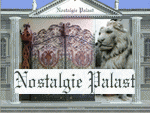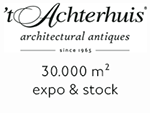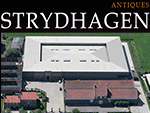Guglielmo Bechi was an Italian archaeologist, architect, teacher and theorist. He lived and worked mainly in Naples. From 1851 until his death shortly after he directed the excavations of Pompeii.
After completing his studies (1805), he later settled in the then capital of the Kingdom of Naples, where he was appointed ufficiale dello Stato Maggiore (officer of the General Staff) (1815). Recommended by the architect and decorator Antonio Niccolini (1772-1850) he became secretary of the Regio Istituto per le Belli Arti (Royal Institute for Fine Arts) (22.03.1822). His inauguration speech was published that same year. His function in the art history department gave him great opportunities, such as to take care of the collections of the Real Museo Borbonico (1824-1843).
Despite his buzzy academic activities, Bechi also successfully dedicated himself to architectural design, in such way that the Duca di San Teodoro appointed him to design an imposing palazzo on the Riviera di Chiaia (1826), a commission he completed cum laude. Admiral and politcian Ferdinando Acton hired him for the finalisation of his villa at the Italian riviera, currently a museum, started by Pietro Valente (1796-1859), but with whom the owner ended up having a bad relationship. Guglielmo Bechi also co-operated in the realisation and decoration of the interiors of the palazzo Ruffo della Scaletta (March 1832 - April 1835) and the Villa Doria d'Angri in Naples (Posillipo).
The magnificent Villa Doria D'Angri at the beginning of Via Posillipo, with a stunning view overlooking the Posillipo bay, belonged since 1592 to the Doria family. In 1592 Vittoria Carafa donated to Isabella della Tolfa, wife of Marcantonio Doria di Angri (d’Angri), a vast estate with a masseria nora being a Posillipo masseria. The initial mansion was rebuild and extended several times. In particular between 1774 and 1782, when a new building was constructed. The Prince of Angri and Duke of Eboli, instructed the most radical rebuilding under the supervision of leading architect Bartolomeo Grasso (1775-ca.1860) and the co-architects Guglielmo Bechi, Luigi Gaddi and Antonio Francesconi (1806-1882), author of the curious octagonal Chinese pagoda. The villa, inspired by the Palladian villas, was commissioned by its owner as a symbol of his prestige and his aspirations as a cultured and refined man. This project needed, from the start in 1831 until the finishing in 1836, the cooperation of a great and excellent team of artists, decorators and craftsmen. The Villa Doria d’Angri - complete with Pompeian atrium and fountains - became one of the most important and interesting neoclassical villas in the area of Posillipo. Its construction was designed to become one with the location on which it was built for a perfect integration between architecture and nature. The most scenic part of the villa were its side terraces, real hanging gardens with water features and fountains. The interior spaces, according to the fashion of the period, were partly frescoed with Pompeian style motifs.
After the death of the Prince, the family decided to abandon the villa which in 1857 was sold to an English noblewoman. It became the headquarters of the Istituto Santa Dorotea and today it is one of the offices of the Univesità Parthenope which houses a prestigious Museo Navale of great historical interest, with a collection of about 160 models of ships and educational nautical instruments, the oldest of which date back to 1920, the year of the foundation of the Institute.
Empire ‘ottoman’ or ‘paté’
Guglielmo Bechi designed for the Villa Doria d’Angri an interior with Pompeian motifs and also carried on this neoclassical style in mirrors, tiles, plasterwork, furniture, etc. A perfect example is this extraordinary Italian Empire ‘otoman’ or ‘paté’ executed in a mix of fustic and amaranth. De positioning of the four seats makes it possible to have a conversation in a comfortable way or to admire for example art. The seat border is decorated with the Doria family escutcheon (a crowned eagle) and garlands. The eight neoclassical designed feet are supported at the lower part by little bare feet and the support itself is decorated with masks. The design is in analogy with the inner frame of the mantle piece in the Villa’s Galleria, most likely the room where the ottoman/paté was situated. The furniture maker was Pietro Viola, who also realised the furniture for the Palazzo Reale and the Villa Floridiana.
Created between 1831-1836
Fustic, amaranth and (new) green velvet upholstering
H. 79 cm, W. 160cm, D. 108 cm
Provenance: Villa Doria d’Angri, via Petrarca 80, Posillipo area, Naples (Italy)
Litterature: Colle, E., Il mobile Impero in Italia. Arredi e decorazioni d’interne dal 1800 al 1843, Milano: Ecclecta, 1998, p. 32-33.




















